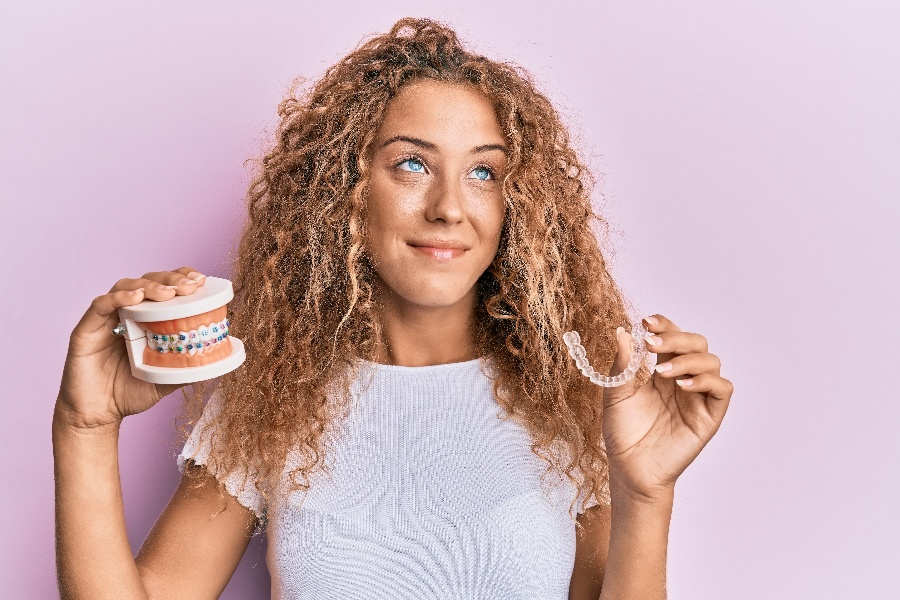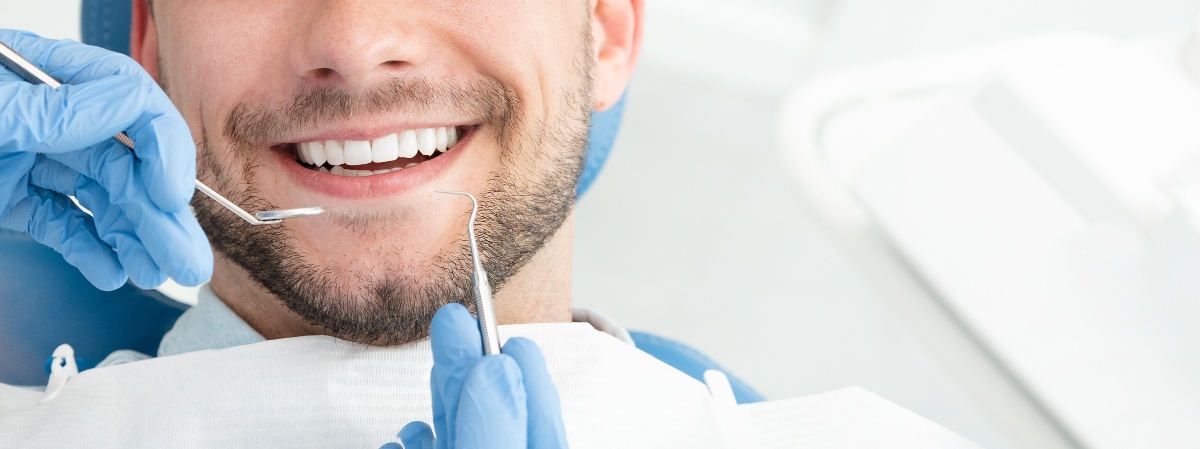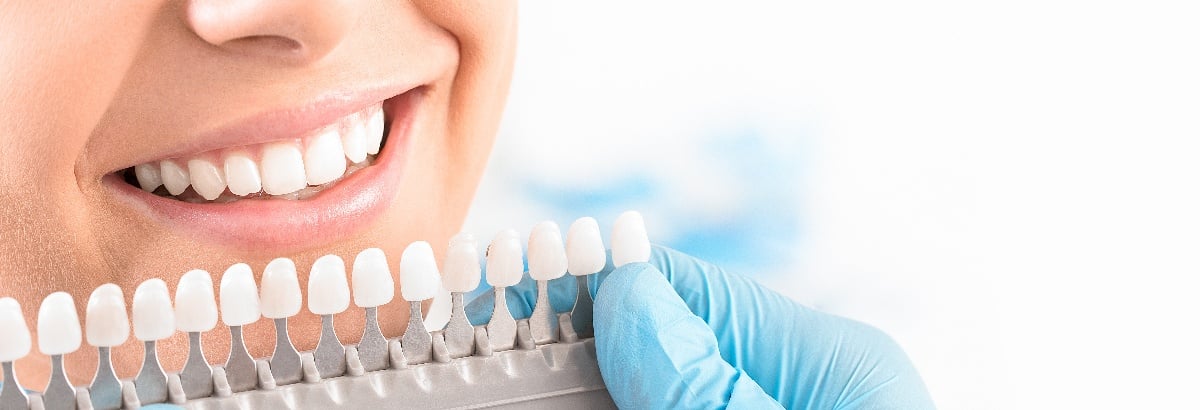A survey by the American Academy of Cosmetic Dentistry found that twice as many people remember a person’s smile rather than what they say after meeting them. The survey also revealed that people can be perceived as less attractive and confident if their smile is flawed. Braces or Invisalign are popular and effective dental treatments to improve your smile. Keep reading to learn more about the pros and cons of each technique.
Why Straighten Teeth
There is nothing new about being concerned with how you look. Although the term cosmetic dentistry did not appear until the 1990s, the awareness of one’s dental appearance reaches back in history. One aspect of a desirable appearance has always been straight teeth that fit together well.
However, there are more benefits to straight teeth than looking good. Properly aligned teeth can help:
-
Prevent tooth decay. When appropriately aligned, there is light contact between adjacent teeth. This contact is crucial to preventing food impaction and plaque accumulation. Crooked teeth often create no contact or awkward contacts that predispose teeth to dental cavities.
-
Prevent gum disease. Straight teeth make brushing and flossing easier. Crooked teeth can lead to areas of your teeth that are inaccessible to cleaning. As plaque accumulates in these areas, you are more prone to periodontal disease.
-
Promote fresh breath. There are several possible causes of halitosis. One is crooked teeth that create areas for plaque to accumulate. Without daily cleaning, this area can eventually cause persistent bad breath.
-
Inhibit teeth grinding. When your teeth bite together evenly, you are less likely to damage your teeth by clenching or grinding. However, one irregularity in your bite can result in clenching or bruxism.
-
Prevent cracked teeth. A misaligned bite can put one or more teeth under excessive stress when chewing. This places you at a greater risk of developing cracks in your teeth.
-
Decrease teeth wear. Many people develop a small amount of wear to their teeth as they age. However, malocclusion (teeth out of alignment) can accelerate this wear. This often leads to extensive dental treatment, including full mouth rehabilitation.
-
Improve overall health. Oral health has been called the gateway to overall health. Straight teeth help create an environment that reduces bacteria harmful to teeth, gums, kidneys, the heart, and other organs susceptible to systemic disease.
-
Enhance speech clarity. A bad bite, such as a severe underbite, overbite, open bite, or overcrowding, can hinder clear speech.
Braces
Since ancient times people have desired straight teeth. From their discoveries of Egyptian mummies’ teeth wrapped with metal bands, archaeologists have speculated that pharaohs used catgut to modify their smiles. The techniques and materials have continued to improve, but the principles behind moving teeth with braces remain very similar.
Traditional metal braces are now made from durable stainless-steel alloy, wires made of various materials including nickel-titanium, and multi-colored elastics made of latex or synthetic rubber. The average time to wear braces ranges from two to three years.
Some cases involving complex jaw and teeth misalignments require using traditional braces. Metal braces that are attached to the teeth are often preferred when treating younger children to avoid the possibility of losing a removable appliance.
The disadvantages of traditional metal braces include:
-
Some people prefer to not show metal when smiling and talking.
-
Metal wires and brackets usually cause mouth sores, especially at the beginning of treatment.
-
Your diet may need to be altered to avoid sticky and crunchy foods while wearing braces.
-
Traditional braces require frequent dental visits for adjustments that can cause discomfort for several days.
-
Wearing braces makes oral hygiene more difficult and time-consuming.
-
Metal braces can cause tooth decalcification that discolors teeth and increases the risk of cavities.
Invisalign
Invisalign is an alternative to metal braces that uses a series of removable clear aligners to move teeth. Some people call them “invisible” because others will not know you are wearing orthodontics until the result is visible. Invisalign is popular among teens and adults in misalignments ranging from simple tooth straightening to more complex cases, such as:
-
Overbite. An overbite or “deep bite” occurs when your upper front teeth excessively cover the lower front teeth when you bite.
-
Overjet. Also known as “buck teeth,” an overjet is when the upper teeth protrude excessively beyond the lower teeth.
-
Underbite. An underbite can make chewing difficult due to the lower teeth being in front of your upper teeth when you close.
-
Crossbite. This misalignment occurs when some of your upper teeth sit inside your lower teeth. This can result in excessive wear or chipping of your teeth.
-
Gap teeth. This is a condition where you have gaps or spaces between some of your teeth.
Eight Advantages of Invisalign
Since its start in the 1990s, Invisalign has grown tremendously in recent years. While initially it appealed more to adults, since 2017 teens and tweens have increasingly chosen Invisalign over metal braces. Although traditional metal braces are still used, increasingly, patients choose Invisalign because of these advantages:
-
Invisible. Invisalign aligners are made with a clear, patented material known as SmartTrack. Besides the many functional benefits of this high-tech material, many people choose Invisalign because they are virtually invisible.
- Comfortable. A part of Invisalign’s ongoing efforts to improve aligners was introducing the SmartTrack material. When patients were surveyed a few years later, the aligners were significantly more comfortable.
- Easy to clean. Everyone who has had traditional braces knows the difficulty of keeping them clean. In contrast, you can remove Invisalign aligners and clean them with gentle brushing and rinsing.
- Safe. Some of the features that make Invisalign safe include:
BPA free
Latex free
Gluten-free
- No dietary restrictions. Invisalign overcomes the need to change your diet while wearing metal braces. After removing the aligners, you can eat your usual diet.
- Simplified oral hygiene. Removable aligners create no need for changes in your brushing and flossing. You do not need special devices such as floss threaders used with braces.
- Fewer office visits. Invisalign is exceptionally time-efficient, with fewer office visits to straighten your teeth. Additionally, you need no appointments due to more sores, displaced wires, dislodged brackets, and other complications.
- Removable. The ability to remove your aligners is beneficial for:
Playing certain instruments
Performances such as singing or giving a speech
Participating in sports
Photographs or portraits
Schedule an Appointment
The oral health professionals at Palmetto Dental Arts are experts in creating winning smiles. We use Invisalign clear aligners to comfortably move your teeth into an improved alignment. Contact us online or call us for a consultation to learn if you are a good candidate for Invisalign.




